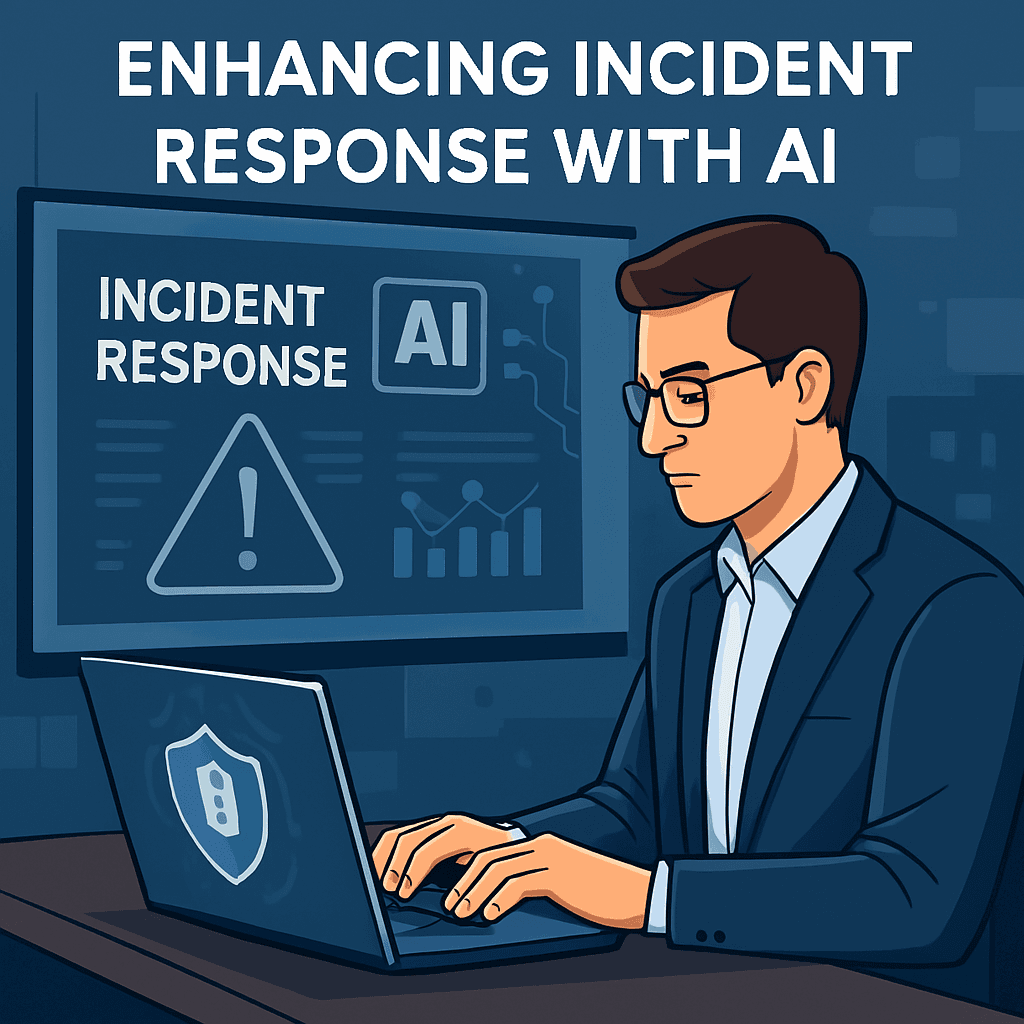How AI Is Transforming Security Incident Response



Security incident response has long been one of the most critical — and most stressful — areas of cybersecurity. The growing volume of alerts, complexity of infrastructure, and shortage of skilled analysts make it increasingly difficult for organizations to respond effectively.
Enter Artificial Intelligence (AI) — offering scalable, real-time support that is reshaping how we detect, triage, and resolve security incidents.
The Traditional Incident Response Model: Limitations and Challenges
Before diving into AI’s role, it’s helpful to understand the current pain points in most security operations centers (SOCs):
- Alert fatigue from excessive false positives
- Manual investigation workflows that consume valuable analyst time
- Slow response times due to overwhelmed teams
- High burnout rates among security staff
- Fragmented tooling leading to context switching and missed patterns
Where AI Enters the Picture
AI — particularly in the form of machine learning, natural language processing (NLP), and large language models (LLMs) like ChatGPT — is being integrated at every stage of incident response. Here’s how:
1. Automated Alert Triage
AI models can:
- Analyze patterns across billions of events
- Classify alerts based on severity and risk context
- Suppress false positives using trained behavior models
💡 Example: AI-powered SIEM platforms like Microsoft Sentinel or Splunk detect and suppress recurring noise automatically.
2. AI-Assisted Investigation and Correlation
AI can help analysts:
- Visualize attack paths (e.g. via graph-based analytics)
- Automatically correlate events across logs, endpoints, and cloud services
- Suggest likely root causes and attack vectors
🔍 Some platforms now auto-generate a timeline of attacker activity — a task that used to take hours manually.
3. Incident Summary and Documentation
Using LLMs like ChatGPT, teams can:
- Generate human-readable incident summaries
- Draft post-mortems and reports
- Create consistent documentation for internal audits
📝 Instead of pasting log data into a report manually, ChatGPT can summarize and format findings in seconds.
4. Response Automation and Recommendations
With AI-in-the-loop:
- Common response actions (e.g., isolate endpoint, reset credentials) can be suggested or executed
- AI can assist with playbook execution based on past incidents and MITRE ATT&CK mapping
⚙️ Tools like Palo Alto Cortex XSOAR and Tines use AI to help automate IR workflows with decision logic.
Real-World Benefits
Organizations using AI in incident response report:
✅ Reduced Mean Time to Detect (MTTD)
✅ Faster Mean Time to Respond (MTTR)
✅ Higher accuracy in prioritizing true threats
✅ Lower analyst burnout
A 2023 SANS survey showed that SOCs using AI/ML were able to handle 3× more incidents without growing headcount.
Risks and Considerations
AI is powerful — but not perfect. Security teams must:
- Continuously train and validate models to avoid bias
- Retain human oversight for critical decision-making
- Ensure data privacy and secure integration with existing tools
Think of AI as augmenting, not replacing, your human defenders.
Practical Tools to Explore
- SIEM/SOAR Platforms: Microsoft Sentinel, Splunk, Cortex XSOAR, IBM QRadar
- NLP & LLM Integrations: ChatGPT for Jira, Elastic AI Assistant
- Custom Python Bots: Use OpenAI’s API to generate auto-summaries or classify logs
Final Thoughts
AI is not a silver bullet, but it’s quickly becoming an essential part of the modern security stack. For organizations aiming to keep up with today’s threat landscape, adopting AI in your incident response lifecycle can mean the difference between a minor alert and a major breach.
By integrating automation, correlation, and AI-assisted intelligence into your response processes, you not only save time — you gain clarity and resilience.